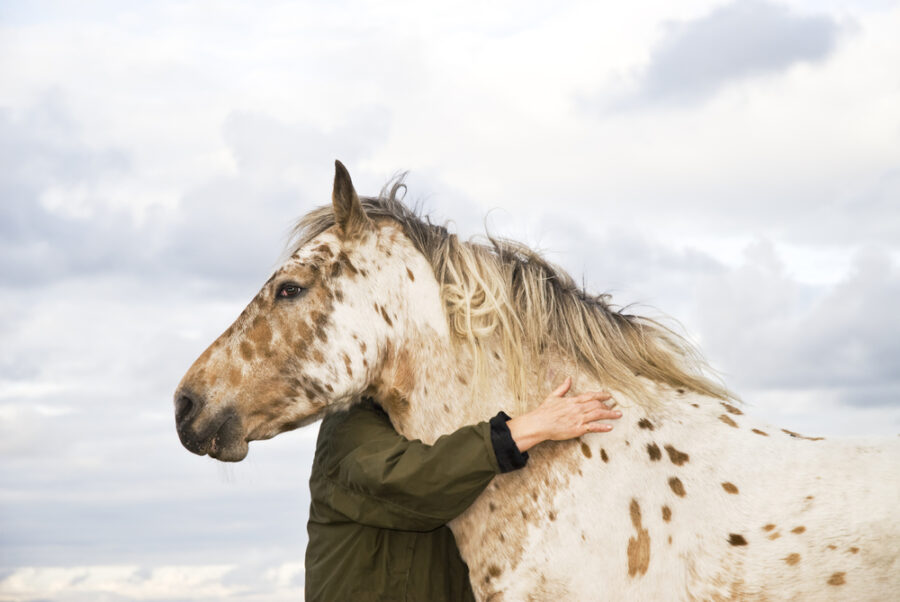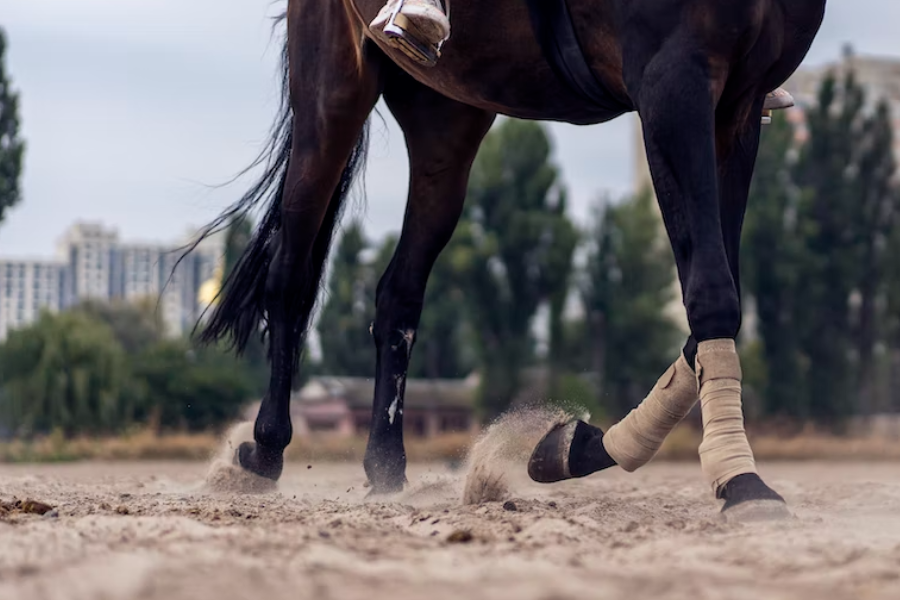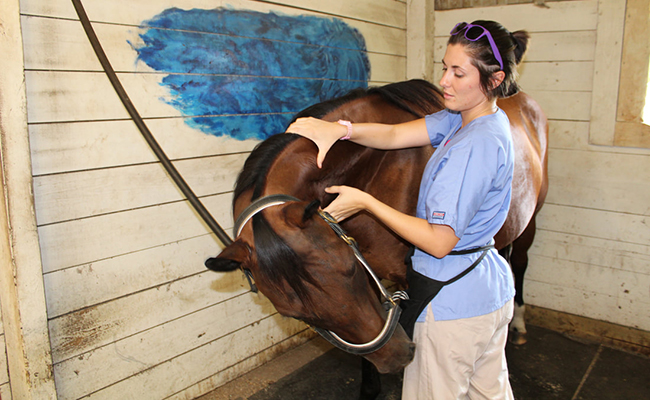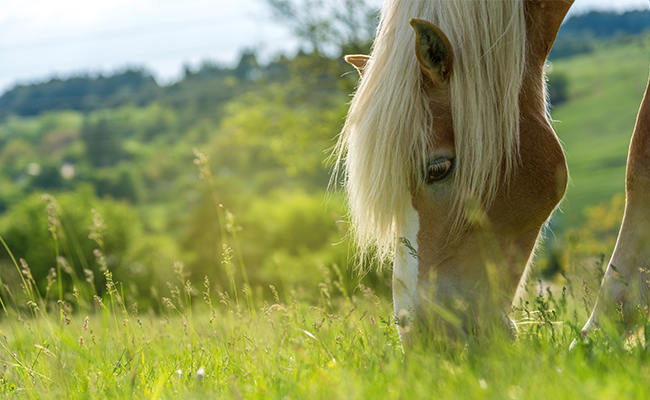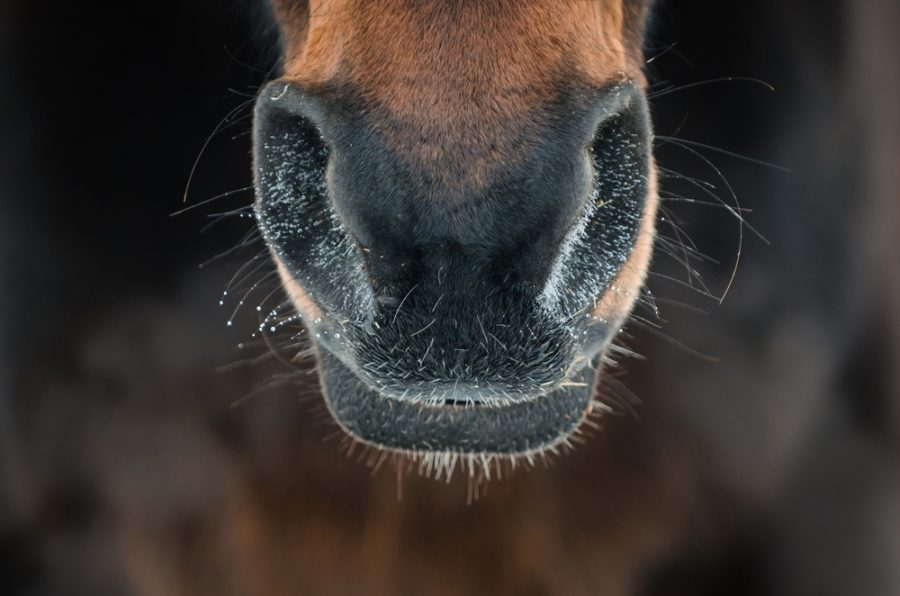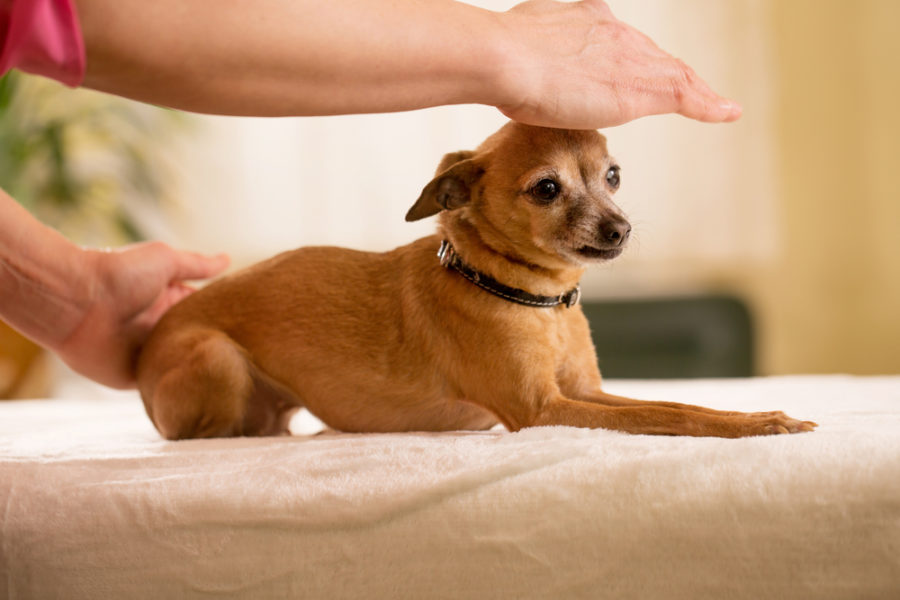Kinesiology tape helps manage the symptoms of degenerative joint disease in horses by providing support, stability, and pain relief, while improving circulation, lymphatic drainage, and proprioception.
Degenerative joint disease (DJD) is a common and painful condition that affects many horses, particularly as they age. It is characterized by the breakdown of cartilage in the joints, leading to inflammation, pain, stiffness, and reduced range of motion. Traditional treatment options for DJD in horses include rest, pain medication, joint injections, and physical therapy. In recent years, kinesiology tape has emerged as a treatment option.
Kinesiology taping for DJD in equines
Kinesiology tape can be used in several ways to manage the symptoms of DJD in horses.
- One common application is to provide support and stability to the affected joint, reducing pain and inflammation. This can be particularly useful for horses with DJD in the fetlock, knee (carpals), hock, or stifle joints, where the extra support provided by the tape can help alleviate strain on the affected area. Kinesiology tape can also be used to improve proprioception in horses with DJD, helping them maintain proper alignment and reduce the risk of further joint damage.
- Kinesiology tape can also be used to facilitate lymphatic drainage in horses with DJD. By applying the tape in a specific pattern (called fancutting) over the affected area, therapists can help remove excess fluid and waste products from the joint, reducing swelling and discomfort. This can help improve the horse’s overall comfort and mobility, making it easier for them to move and exercise without pain.
- Furthermore, kinesiology tape can be used to improve circulation in horses with DJD, helping to deliver oxygen and nutrients to the affected joint and promote healing. By applying the tape in a specific way, therapists can enhance blood flow to the area, reducing inflammation and promoting tissue repair. This can help speed up the horse’s recovery time and improve their overall quality of life.
Applying kinesiology tape to a horse
When applying tape to horses, you first want to make sure the area is clean and free of any oils (such as oil-based fly sprays or coat conditioners). Tapes made specifically for animals, or intended for athletes who perform water sports, will stick better to the horse’s hair due to their stronger glue composition. If the coat is naturally oily, or the horse will be sweating, you should consider utilizing an athletic “sticky spray” to allow the tape to stay on longer. Depending on the location where the tape is applied, it can stay on for one to three days before being replaced. Horses can wear this therapeutic tape during turnout, stall time, exercise, and while being ridden. However, be sure to check the laws regarding kinesiology tape when attending a horse show. The United States Equestrian Federation (USEF) states that horses are not allowed to step out of their stalls while wearing the tape, but can wear it while unsaddled in the stable.
Fetlock joint
In horses, arthritis is most commonly found in the fetlock joint, a complex and weight-bearing joint that connects the long pastern bone to the short pastern bone, and then to the cannon bone. The fetlock joint plays a crucial role in the horse’s ability to move and perform various activities.
To support the fetlock joint, you will need two to three strips of tape cut at about 13” long. Tear the paper in the middle of the strip of tape and fold the edges back. Pull either side of the tape to create a 50% stretch in the center of the tape. Place the center of the tape directly over the posterior fetlock joint and lay the ends of the tape down at a 45° angle, covering the anterior aspect of the joint with no stretch. Using the second strip of tape, repeat this application but place the ends of the tape at a 25° angle instead. If additional stabilization is needed, you can repeat the second step with a third strip of tape. For horses with DJD in their fetlock joints, this application should be utilized while exercising, riding or training.
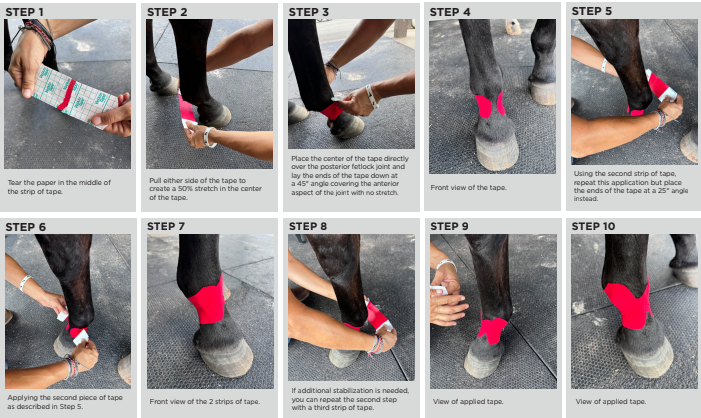
Hock joint
Another common joint where DJD is found is the hock joint. One of the primary symptoms of hock arthritis in horses is stiffness and swelling in the affected joint. This can lead to lameness, especially when the horse is moving or exercising. Other signs of hock arthritis in horses may include difficulty bending the affected leg, decreased range of motion, and reluctance to perform certain movements or activities.
To stabilize the hock joint, you will use two strips of tape approximately 22” in length. Start by anchoring the tape on the superior, posterior aspect of the hock and lay it down with paper-off tension over the lateral aspect of the hock, moving inferior to the anterior and medial portions of the joint. The base should lie just underneath the chestnut at the inferior, medial aspect of the hock. Mirror this taping with your second strip of tape, starting at the posterior, superior aspect of the hock and placing the tape down in a medial, anterior to lateral position. For horses with DJD in their hocks, this application should be utilized during exercise of any kind.


Conclusion
Overall, kinesiology tape is a versatile and effective treatment option for managing the symptoms of DJD in horses. Its ability to provide support, stability, and pain relief, as well as improve circulation, lymphatic drainage, and proprioception, make it ideal for horses with this debilitating condition. By incorporating kinesiology tape into a comprehensive treatment plan for DJD, veterinarians and therapists can help horses maintain their mobility, comfort, and quality of life for as long as possible.


